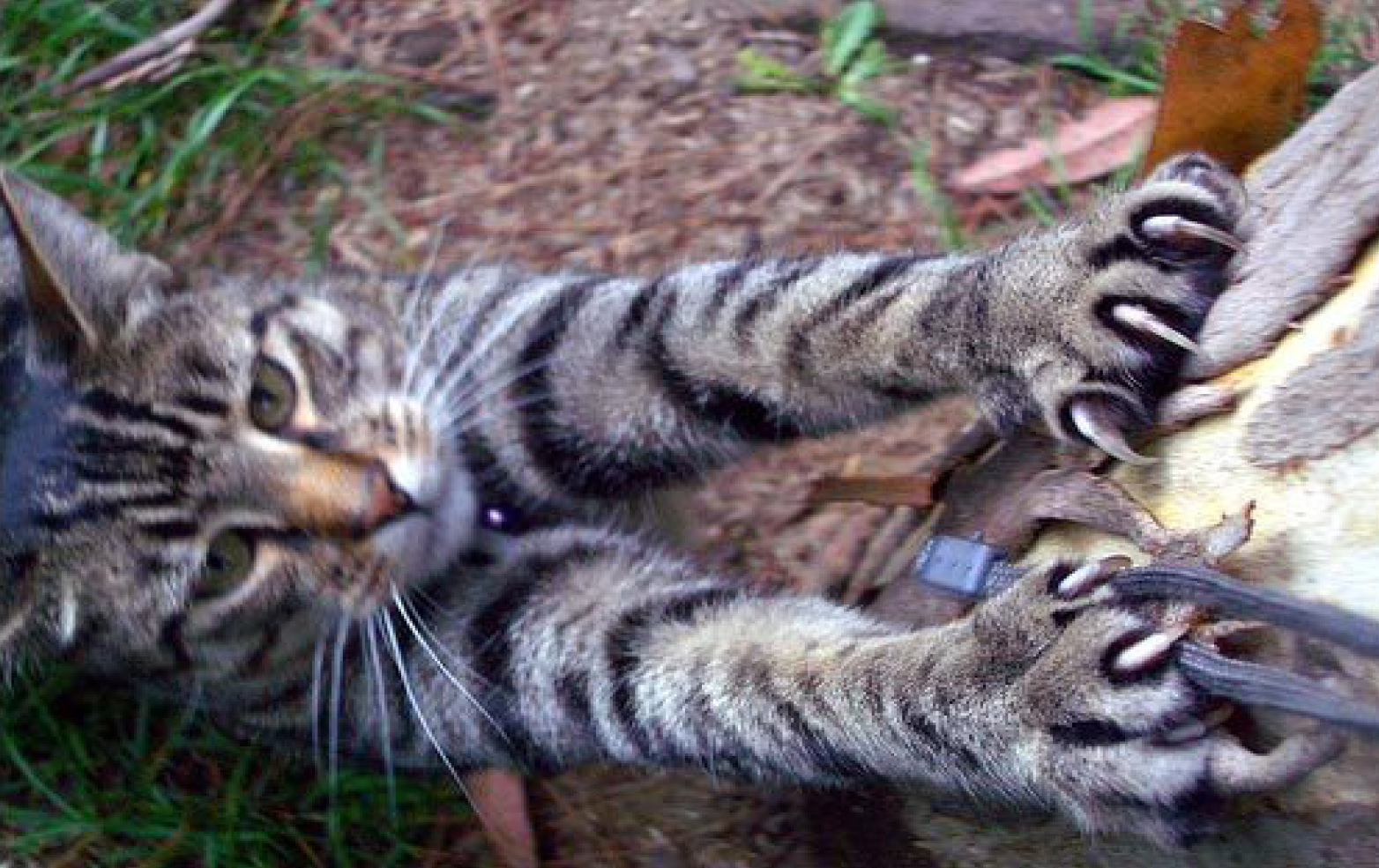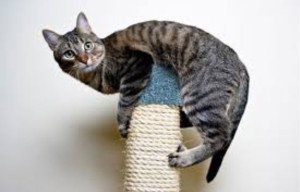The Importance Of Cat Claws

Why do cats need to claw?
Cats claw for a few reasons, to maintain the health of the claw and remove the sheath, to mark their territory, for exercise and to relieve stress or release emotional energy.
How do cats use claws to mark their territory?
Cats have glands between their toes that allow them to scent mark surfaces while creating a visual mark. In multi-‐cat households, cats scratch more often than in single-‐cat homes. Cats demonstrate scratching in front of subordinate cats.
Are claws important for mobility?
Yes! Cats are digitigrade which means they walk on their toes. All of the cat’s joints and muscles are designed to distribute weight onto the toes at a walk or a run. Claws are important for climbing, play or escape, and are important for cats to feel safe. Claws are useful for balance as well as isometric exercises to give a nice stretch for the back muscles, shoulders, legs and paws.
How can I teach my kitten or cat to scratch on surfaces I approve of?
Scratching is species-‐specific natural behavior for cats. If you are going to share your home with a cat you must teach them what is appropriate to scratch. Invest in scratching posts and teach your cat to use it by incorporating catnip, toys, praise and food rewards when they do. DO NOT yell or provide adverse actions against scratching as this could result in increased stress and actually lead to more scratching. Also, the cat may learn to scratch when you’re not around instead.
Is there any benefit to trimming my cat’s claws?
Absolutely! Not only will trimming the claws blunt damage to undesired surfaces but the longer the claw the more desire a cat has to scratch and remove the sheath. DO NOT trim claws immediately after a cat has been scratching as this may be interpreted as punishment. DO trim claws when your cat is being affectionate and give praise or treats. Ask your vet to show you how to trim and don’t put pressure on yourself or your cat to trim them all at once.
I bought a scratching post and my cat doesn’t use it so it’s hopeless right?
 Not at all! Cats are individuals and vary in preferences of scratching surfaces. There are lots of cheap ineffective scratchers on the market so don’t give up! Some cats like vertical scratchers others prefer horizontal, try both. Cat trees have a variety of surfaces. Your cat may like sisal rope, carpet, corrugated cardboard, hemp, logs or fabric scratchers. Stability is important because if it wobbles it could fall and your cat will be afraid to use it. When you introduce your cat to the scratcher make it fun, don’t just set it and forget it.
Not at all! Cats are individuals and vary in preferences of scratching surfaces. There are lots of cheap ineffective scratchers on the market so don’t give up! Some cats like vertical scratchers others prefer horizontal, try both. Cat trees have a variety of surfaces. Your cat may like sisal rope, carpet, corrugated cardboard, hemp, logs or fabric scratchers. Stability is important because if it wobbles it could fall and your cat will be afraid to use it. When you introduce your cat to the scratcher make it fun, don’t just set it and forget it.
Use catnip or a wand toy to get them playing on or around it. Once the cat has scratched it, their scent will be on the post. NEVER force them onto it or to use it as this may put them off. DO NOT use pheromones like Feliway on the scratcher – cats do not scratch where they facial mark and this may put them off using it. Just as important as the material is the location!! Scratchers need to be in core or central areas of the home. DO NOT put scratching posts at the perimeter of the home, basement or garage, as they are less likely to be used. If your cat already scratches an undesirable surface the new scratcher should be en route to or in proximity to the old area but not right next to it.
How do I deter my cat from scratching something I don’t want damaged?
Habits can take time to change, be patient and remember your cat doesn’t know how much you paid for your sofa. Make these surfaces undesirable at the same time as making the new scratching surface desirable. Drape the furniture you want to protect or apply double-‐ sided tape (catwhispererproducts.com) for a few weeks. If the target is a rug, turn it over. Apply pheromones or plug-‐ ins to the areas you want to PROTECT to reduce stress-‐related clawing. Use a cloth to wipe the cats face and rub this scent on the surface you’d like to protect. Distract your cat with a toy to the new scratching area when they are on their way to scratch the undesired surface. Placing a bell on the collar can help alert you to their arrival. Lastly if the scratching proves difficult to divert apply Soft paws® nail caps to prevent damage from the front claws. Only after the cat is using the NEW scratcher for a few weeks should you remove the double-‐sided tape or other surface protectors. Praise your cat for using the desired scratcher. Show him/her what TO DO not just what NOT TO DO.
Final Thoughts
Think about your cat’s environment – is he/she bored or stressed? Eliminating various sources of stress can reduce the frequency of scratching. Lack of stimulation or lack of outlets to release emotion can increase scratching. Try food puzzles, interactive wand toys, tunnels and trees. Could there be stress from conflicts between animals in the home or stress from litter box or feeding situations?
Where can I find more behavioral advice on scratching or other problems?
 The Cat Behavior Clinic – Mieshelle Nagelschneider (Harvard trained behaviorist) Online or over the phone consultation: 1 ½ hours consultation $275 with follow up for life 35-55$ Often covered by pet insurance; check with your provider.
The Cat Behavior Clinic – Mieshelle Nagelschneider (Harvard trained behaviorist) Online or over the phone consultation: 1 ½ hours consultation $275 with follow up for life 35-55$ Often covered by pet insurance; check with your provider.
Jackson Galaxy behavior videos on YouTube, star of “My cat from Hell” on Animal Planet.
By Amber Aher, DVM
- Behavior (15)
- Caring for your pet (291)
- cat (15)
- Community Events (20)
- dog (16)
- From Our Clients (15)
- Happy Tails (12)
- News (453)
- Press (53)
- Products (2)
- Questions (4)
- Recalls (1)
- Special Offers (6)
- Tips & Advice (231)
- Uncategorized (21)
- Veterinary Services (49)
